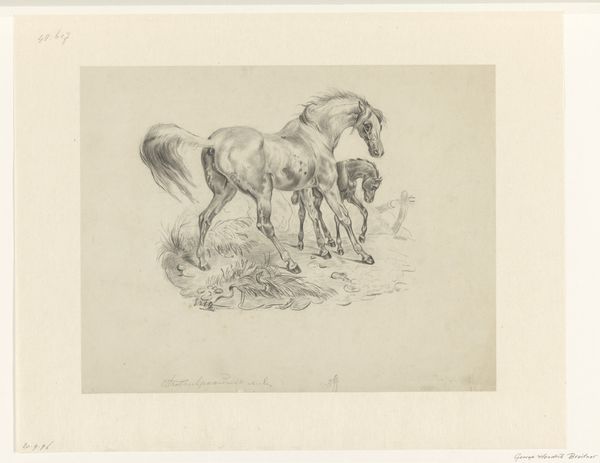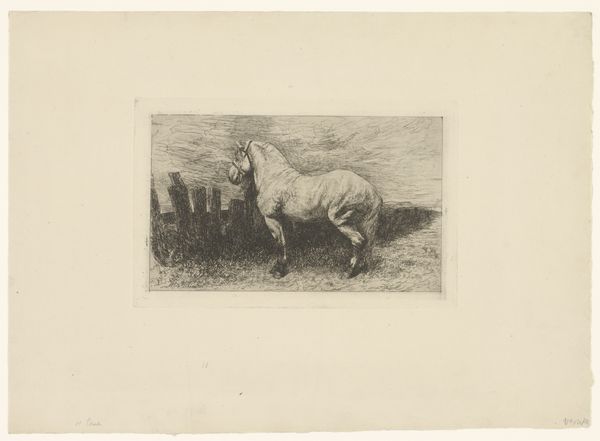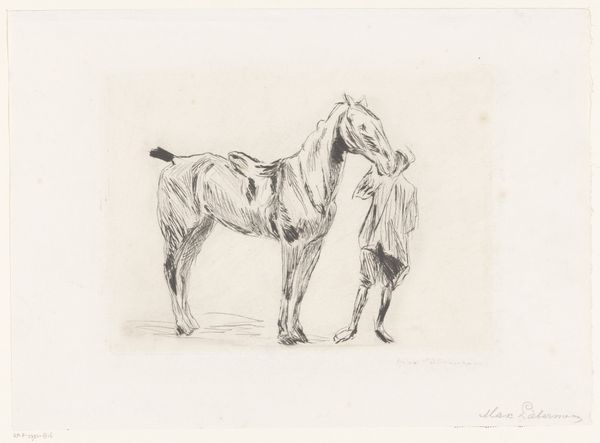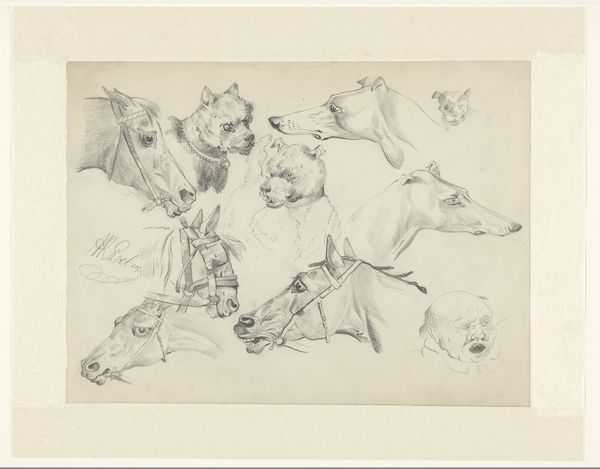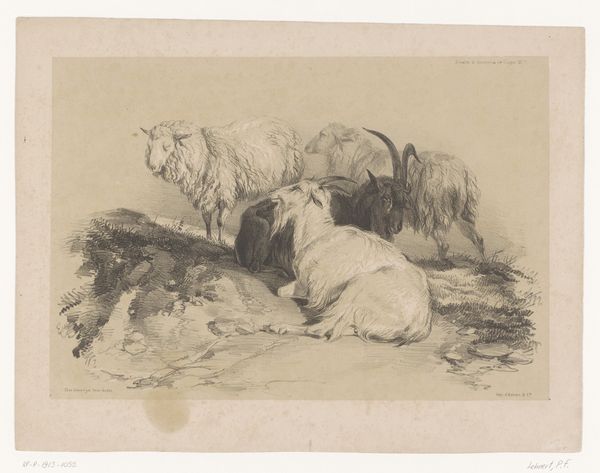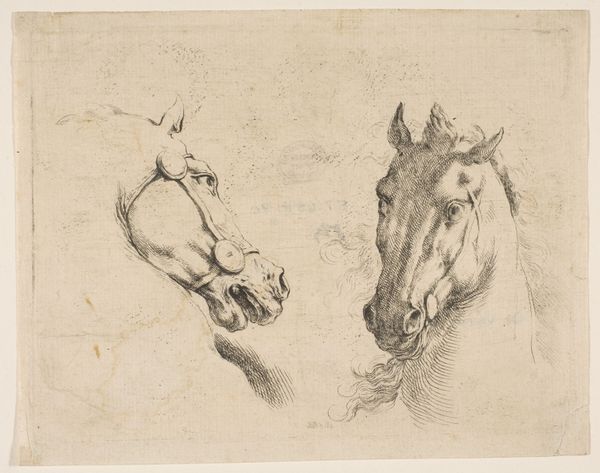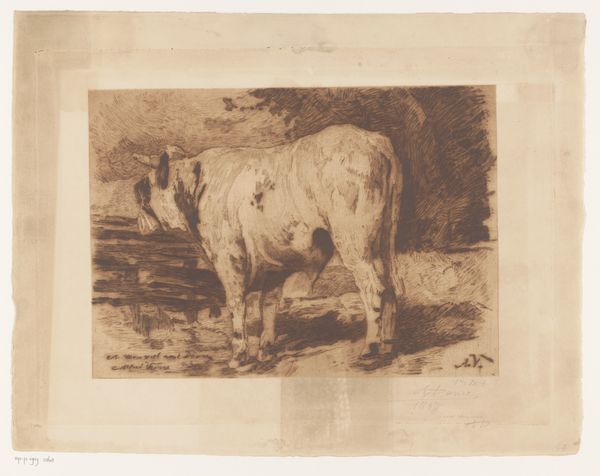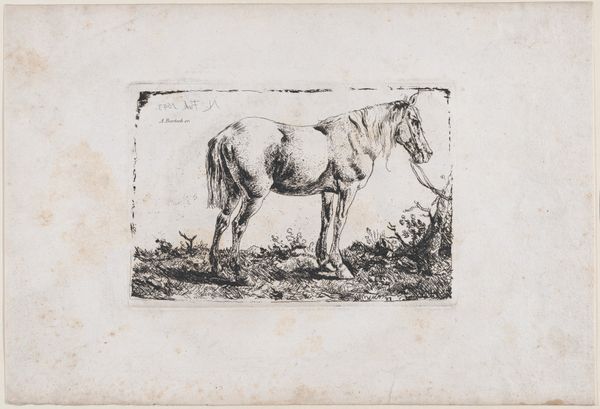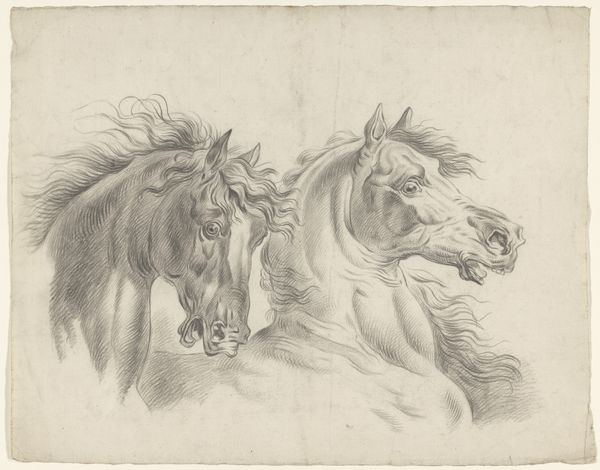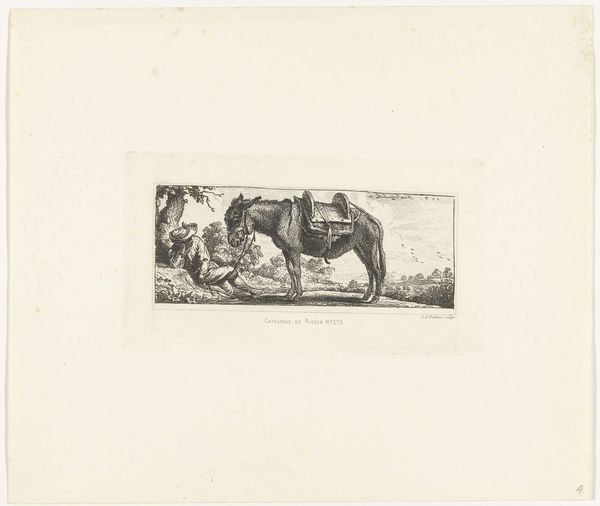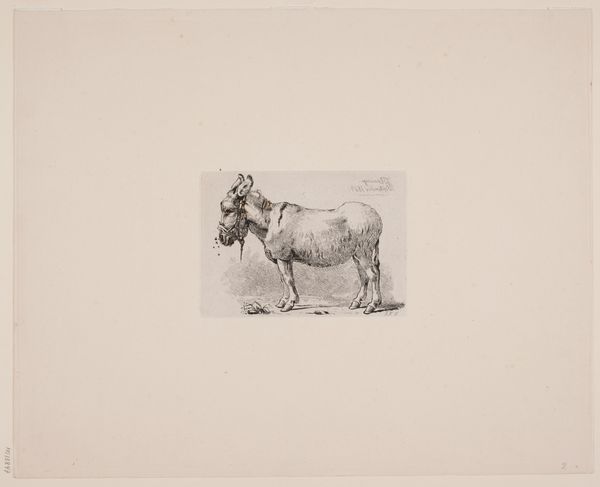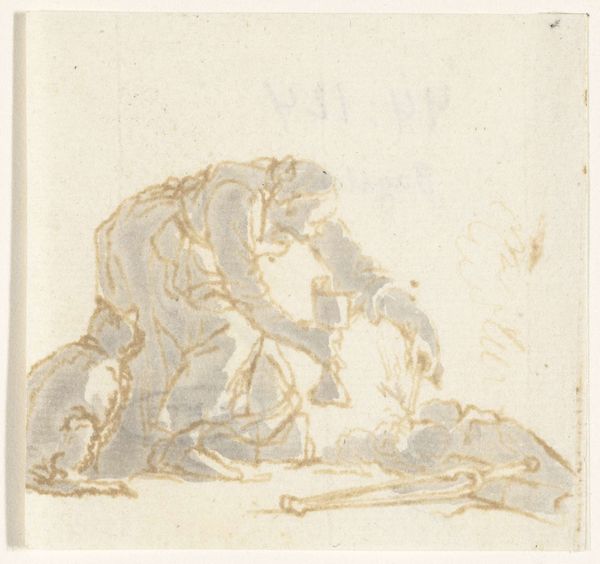
drawing, print, pencil
#
pencil drawn
#
drawing
# print
#
pencil sketch
#
figuration
#
pencil drawing
#
romanticism
#
pencil
#
history-painting
#
academic-art
Dimensions: Sheet: 10 5/8 x 8 1/16 in. (27 x 20.5 cm) Image: 7 1/16 x 5 in. (18 x 12.7 cm)
Copyright: Public Domain
Eugène Delacroix made this graphite drawing, Theseus Conqueror of the Centaur Eurytus, sometime in his career. Delacroix, working in France in the 19th century, was one of the great painters of historical and mythological scenes. Here, the Greek hero Theseus overpowers a centaur, a mythological creature with the head, arms, and torso of a man and the body and legs of a horse. We see the centaur subdued and defenseless beneath the superior man, a common visual trope at this time. Such images served to reinforce social hierarchies, especially the subjugation of non-European peoples by Europeans. This imagery also speaks to the gendered politics of the day, with the male form celebrated as strong and virile. Art historians consult sources like period writings and political cartoons to understand these power dynamics. The role of museums in exhibiting such works also deserves scrutiny, and we can explore their impact on contemporary social discourse.
Comments
No comments
Be the first to comment and join the conversation on the ultimate creative platform.
